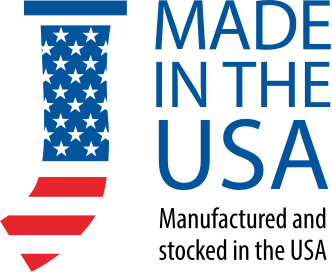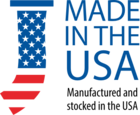What is the Difference Between Wet & Dry Bond Lamination Process?

Laminating is an industrial product protection and enhancement process that is integral to numerous different types of parts, components, and materials involved in industrial manufacturing and production, as well as other kinds of industries. The lamination of parts, components, and materials can make that specific product stronger, more durable, last longer, more rigid or flexible, as well as add an enhanced aesthetic. Depending on the type of product you have that needs laminating, there are numerous different types of lamination processes, of which cater to certain types of industries. For the particular purpose of this blog, the subject involves wet and dry bond laminating, and what features separate the two processes apart from one another.
Wet Bond lamination is a laminating process used to laminate two substrates, one of which is porous, such as paper. For example, a foil and paper substrate lamination may be accomplished through a wet bonding process. Once the wet bonding process is applied to each substrate, the two substrates will then be combined prior to passing through an oven, which is used for the drying process. This drying process is where the adhesive materials will dry, essentially adhering the two substrates together, therefore, the two substrates need to be combined before the adhesive is dried in the oven.
Dry Bond lamination is the laminating process used to laminate two substrates, both of which are non-porous, or impervious to filtration. For example, film on film, and film on foil laminations would go through the process of dry bonding. The adhesive used to combine the two substrates together will be applied to either one of the substrates, and then dried in an oven prior to being combined with the second substrate. The two substrates are combined after the adhesive is dried for maximum efficiency of the dry bond lamination process.
As you can see, each laminating process is very particular in its process, meaning only certain types of industrial products can be put through the process. In other words, wen and dry bond laminating is not a universal method of lamination, and if you have any questions about whether industrial products you have can be put through either one of these processes, you should consult an expert authority. One such expert authority on not only wet and dry bond laminating, but other lamination processes as well is Jessup Manufacturing. Jessup experts can analyze the type of industrial products you have, and then help you examine the available types of lamination processes you can choose to use to enhance or improve your specific products. If you require more information regarding wet and dry bond lamination, you can also consult with a representative from Jessup, and he or she can provide additional information to what is found in this blog post.
 Laminating is an industrial product protection and enhancement process that is integral to numerous different types of parts, components, and materials involved in industrial manufacturing and production, as well as other kinds of industries. The lamination of parts, components, and materials can make that specific product stronger, more durable, last longer, more rigid or flexible, as well as add an enhanced aesthetic. Depending on the type of product you have that needs laminating, there are numerous different types of lamination processes, of which cater to certain types of industries. For the particular purpose of this blog, the subject involves wet and dry bond laminating, and what features separate the two processes apart from one another.
Wet Bond lamination is a laminating process used to laminate two substrates, one of which is porous, such as paper. For example, a foil and paper substrate lamination may be accomplished through a wet bonding process. Once the wet bonding process is applied to each substrate, the two substrates will then be combined prior to passing through an oven, which is used for the drying process. This drying process is where the adhesive materials will dry, essentially adhering the two substrates together, therefore, the two substrates need to be combined before the adhesive is dried in the oven.
Dry Bond lamination is the laminating process used to laminate two substrates, both of which are non-porous, or impervious to filtration. For example, film on film, and film on foil laminations would go through the process of dry bonding. The adhesive used to combine the two substrates together will be applied to either one of the substrates, and then dried in an oven prior to being combined with the second substrate. The two substrates are combined after the adhesive is dried for maximum efficiency of the dry bond lamination process.
As you can see, each laminating process is very particular in its process, meaning only certain types of industrial products can be put through the process. In other words, wen and dry bond laminating is not a universal method of lamination, and if you have any questions about whether industrial products you have can be put through either one of these processes, you should consult an expert authority. One such expert authority on not only wet and dry bond laminating, but other lamination processes as well is Jessup Manufacturing. Jessup experts can analyze the type of industrial products you have, and then help you examine the available types of lamination processes you can choose to use to enhance or improve your specific products. If you require more information regarding wet and dry bond lamination, you can also consult with a representative from Jessup, and he or she can provide additional information to what is found in this blog post.
Laminating is an industrial product protection and enhancement process that is integral to numerous different types of parts, components, and materials involved in industrial manufacturing and production, as well as other kinds of industries. The lamination of parts, components, and materials can make that specific product stronger, more durable, last longer, more rigid or flexible, as well as add an enhanced aesthetic. Depending on the type of product you have that needs laminating, there are numerous different types of lamination processes, of which cater to certain types of industries. For the particular purpose of this blog, the subject involves wet and dry bond laminating, and what features separate the two processes apart from one another.
Wet Bond lamination is a laminating process used to laminate two substrates, one of which is porous, such as paper. For example, a foil and paper substrate lamination may be accomplished through a wet bonding process. Once the wet bonding process is applied to each substrate, the two substrates will then be combined prior to passing through an oven, which is used for the drying process. This drying process is where the adhesive materials will dry, essentially adhering the two substrates together, therefore, the two substrates need to be combined before the adhesive is dried in the oven.
Dry Bond lamination is the laminating process used to laminate two substrates, both of which are non-porous, or impervious to filtration. For example, film on film, and film on foil laminations would go through the process of dry bonding. The adhesive used to combine the two substrates together will be applied to either one of the substrates, and then dried in an oven prior to being combined with the second substrate. The two substrates are combined after the adhesive is dried for maximum efficiency of the dry bond lamination process.
As you can see, each laminating process is very particular in its process, meaning only certain types of industrial products can be put through the process. In other words, wen and dry bond laminating is not a universal method of lamination, and if you have any questions about whether industrial products you have can be put through either one of these processes, you should consult an expert authority. One such expert authority on not only wet and dry bond laminating, but other lamination processes as well is Jessup Manufacturing. Jessup experts can analyze the type of industrial products you have, and then help you examine the available types of lamination processes you can choose to use to enhance or improve your specific products. If you require more information regarding wet and dry bond lamination, you can also consult with a representative from Jessup, and he or she can provide additional information to what is found in this blog post.












